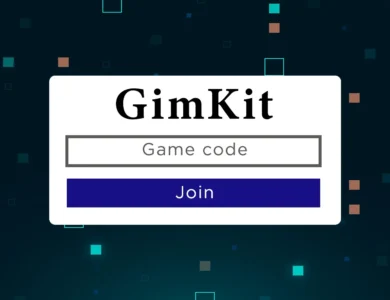Google Block Breaker: How to Play the Hidden Breakout

Table of Contents
Introduction
Google is famous for hiding little surprises in its search engine, often called Easter eggs. These playful features are tucked into everyday searches and give users something fun and unexpected. One of the latest and most exciting Easter eggs is Google Block Breaker, a modern take on the classic Breakout arcade game.
With just a simple search, you can unlock a full-screen, colorful brick-breaking experience right in your browser—no download, no app, and no sign-in required. The game combines nostalgia with new twists, including power-ups, special brick types, and smooth performance across both desktop and mobile devices.
Whether you’re looking for a quick break from work, want to relive arcade memories, or simply enjoy finding hidden Google tricks, Block Breaker is a gem worth exploring. In this article, we’ll explain what it is, how to play it, strategies to win, and why it’s one of Google’s best hidden treasures.
What Is Google Block Breaker?
Google Block Breaker is a hidden Easter egg game built directly into Google Search. When you type “block breaker” in the search bar, a small card with the game appears. Clicking Play opens a full-screen version, instantly transporting you into a retro arcade challenge.
The game is inspired by the legendary 1970s arcade title Breakout, where players use a paddle to bounce a ball against rows of bricks, clearing them for points. Google’s version keeps the charm of the original but adds modern design, crisp visuals, and fun new elements like power-ups and dynamic challenges.
It’s not just nostalgia—it’s polished, lightweight entertainment that loads instantly in any modern browser. Unlike many online games, there’s no clutter, ads, or interruptions. Google designed Block Breaker as a pure fun experience, available at the click of a button whenever you need it.
How to Play Google Block Breaker
The gameplay is simple and intuitive, but mastering it takes practice.
- Controls on Desktop: Use the left and right arrow keys to move the paddle, or drag your mouse to guide it.
- Controls on Mobile: Swipe left or right, or tap the screen to control the paddle.
- Objective: Keep the ball in play while breaking all the bricks at the top of the screen.
- Lives: You begin with three lives. Losing the ball reduces one life. The game ends when all lives are gone.
- Progression: Each level introduces new rows of bricks, increasing the challenge.
The game runs smoothly on both desktop and mobile, with responsive controls and fast load times. It’s designed for short bursts of play, but its addictive nature may keep you going longer than you expect.
Power-Ups and Special Features
What makes Google Block Breaker more than just a remake is its power-up system. Breaking certain bricks triggers exciting upgrades that can completely change the pace of the game.
Some popular power-ups include:
- Extra Ball: Adds one or more additional balls, making it easier to clear bricks quickly.
- Extended Paddle: Enlarges your paddle, giving you more control and safety.
- TNT Explosion: Destroys multiple bricks at once, clearing tough clusters.
- Dual Blasters: Equips your paddle with cannons that shoot directly at bricks.
- Multi-Hit Bricks: Some bricks require two or more hits, adding strategy and challenge.
These mechanics keep the game fresh, unpredictable, and engaging. They also reward quick reflexes and sharp focus, especially when multiple balls are bouncing around the screen.
Why Google Block Breaker Is Special
There are countless brick-breaker clones online, but Google Block Breaker stands out for several reasons:
- Instant Access: No download or account needed. It runs directly in Google Search.
- Nostalgic but Modern: It captures the spirit of classic arcade games while adding sleek animations and upgrades.
- Universal Fun: Easy for beginners, yet challenging for experienced players chasing high scores.
- Polished Design: Clean interface, bright Google colors, and responsive performance make it stand apart.
- Perfect for Quick Breaks: You can play for two minutes or twenty, making it ideal for short breaks during work or study.
Google has created many Easter eggs over the years, but Block Breaker is one of the most engaging because it combines simplicity with depth.
Winning Strategies and Tips
If you want to score higher or last longer, here are some tried-and-tested strategies:
- Learn Paddle Angles
The angle at which the ball bounces depends on where it hits the paddle. Striking near the edge sends the ball at sharper angles—use this to reach tricky bricks. - Catch Power-Ups Wisely
Not every power-up is equally useful at every moment. For example, extra balls are powerful but chaotic. Focus on maintaining control. - Target Clusters First
Aim for areas with lots of bricks. Once a gap is opened, balls can travel behind and clear multiple rows. - Stay Calm With Multi-Balls
When multiple balls are active, prioritize saving at least one ball rather than chasing all of them. - Use the Walls
Bounce the ball off the walls to reach hidden spots or bricks at awkward angles.
Mastering these strategies can turn you from a casual player into a consistent high-scorer.
The Legacy of Breakout Games
Block Breaker continues a proud legacy. The original Breakout was created in the 1970s by Atari, and it became one of the most iconic arcade games in history. Its simple mechanics and addictive gameplay spawned countless clones and variations over the decades.
Google has celebrated this genre before. In 2013, they launched an Easter egg called “Atari Breakout” inside Google Images. When users searched for it, the image results transformed into a playable game. While that Easter egg eventually disappeared, Block Breaker revives the concept with modern improvements and fresh design.
This continuity shows Google’s playful side—keeping old traditions alive while reimagining them for today’s audiences.
Why People Love Hidden Google Games
Google’s hidden games and Easter eggs are not just entertainment—they’re cultural moments. People enjoy discovering them because:
- They create surprise and delight.
- They provide stress relief during work or study.
- They showcase Google’s creativity and personality.
- They remind users that technology can also be playful, not just functional.
From Pac-Man doodles to Dinosaur Run, Google has built a tradition of casual, accessible fun. Block Breaker is the latest—and one of the best—in this lineup.
Read More: Essential Cloud Security Tips for Safer Cloud Use
Conclusion
Google Block Breaker is more than just a game—it’s a celebration of nostalgia, creativity, and fun. By hiding it inside search results, Google reminds us that small moments of joy can be found in everyday tools. The game balances simplicity with exciting mechanics like power-ups, multi-balls, and explosive bricks, making it engaging for both casual and competitive players.
Its accessibility is unmatched: no download, no login, and no extra steps. Anyone with an internet connection can type “block breaker” and instantly enjoy a polished arcade experience. Whether you’re taking a quick brain break, chasing a high score, or reliving retro memories, Block Breaker delivers on all fronts.
In a world where technology often feels overwhelming, this Easter egg shows the lighter side of digital life. If you haven’t tried it yet, search for “block breaker” on Google—and get ready for addictive, colorful fun.
FAQs
1. What is Google Block Breaker?
Google Block Breaker is a hidden Easter egg game in Google Search where you bounce a ball to break colorful bricks using a paddle.
2. How do I play it?
Type “block breaker” in Google Search, click Play, and use arrow keys, mouse, or touch controls to move the paddle.
3. Are there power-ups in the game?
Yes. Power-ups include extra balls, paddle extensions, TNT explosions, and even blaster upgrades.
4. Can I play Block Breaker on mobile?
Absolutely. The game is fully optimized for smartphones and tablets with simple swipe and tap controls.
5. Is the game always available?
Yes. Unlike some temporary Google doodles, Block Breaker can be accessed anytime by searching for it.



